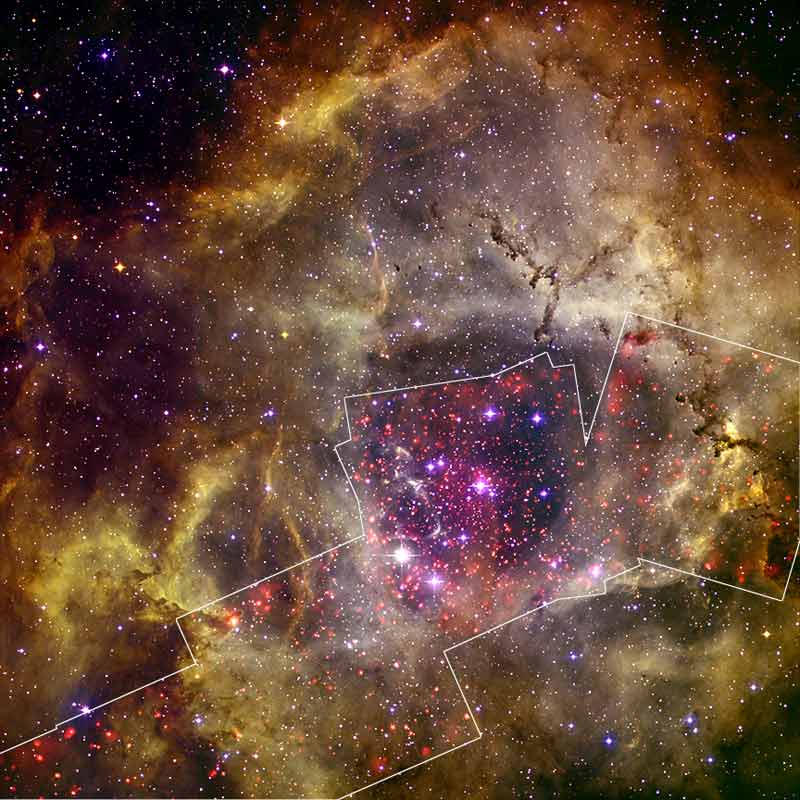Rosette Nebula Sparkles In New Photo

The RosetteNebula, a hotbed of star formation about 5,000 light-years from Earth, isphotographed in a stunning new image from NASA's Chandra X-ray Observatory.
In thecomposite image of the Rosette Nebula, X-rays reveal hundreds of youngstars in a central cluster with fainter clusters on either side. [New photo of the Rosette Nebula.]
On the rightside of the image is a cluster named NGC 2237. A recent Chandra study, led by JunfengWang of the Harvard-Smithsonian Center for Astrophysics in Cambridge, Mass., probedthe low-mass stars located in this satellite cluster.
Previously, only36 young stars were known in NGC 2237, but Chandra data provided a much clearercensus, and increased the tally of known stars to about 160.
Optical datafrom the Digitized Sky Survey, an online astronomy database, and the Kitt PeakNational Observatory near Tucson, Ariz., are represented by the purple, orange,green and blue light. These data show large areas of gas and dust, includinggiant pillars that are residual landmarks leftover after intense radiation frommassive stars eroded the more diffuse gas.
The presenceof several X-ray emitting stars around the pillars, and thedetection of an outflow of gas ? commonly associated with very young stars ?originating from a dark area of the optical image indicates that star formation is still continuing in the cluster.
Corroboratingthese results with earlier studies, the astronomers concluded that the centralcluster in the nebula formed first. The subsequent expansion of the nebulatriggered the formation of the two neighboring clusters, which includes NGC2237.
Breaking space news, the latest updates on rocket launches, skywatching events and more!
- Spectacular Nebulas in Deep Space
- Top 10 Star Mysteries
- Soul Nebula's Heart Caught on Camera

Space.com is the premier source of space exploration, innovation and astronomy news, chronicling (and celebrating) humanity's ongoing expansion across the final frontier. Originally founded in 1999, Space.com is, and always has been, the passion of writers and editors who are space fans and also trained journalists. Our current news team consists of Editor-in-Chief Tariq Malik; Editor Hanneke Weitering, Senior Space Writer Mike Wall; Senior Writer Meghan Bartels; Senior Writer Chelsea Gohd, Senior Writer Tereza Pultarova and Staff Writer Alexander Cox, focusing on e-commerce. Senior Producer Steve Spaleta oversees our space videos, with Diana Whitcroft as our Social Media Editor.
